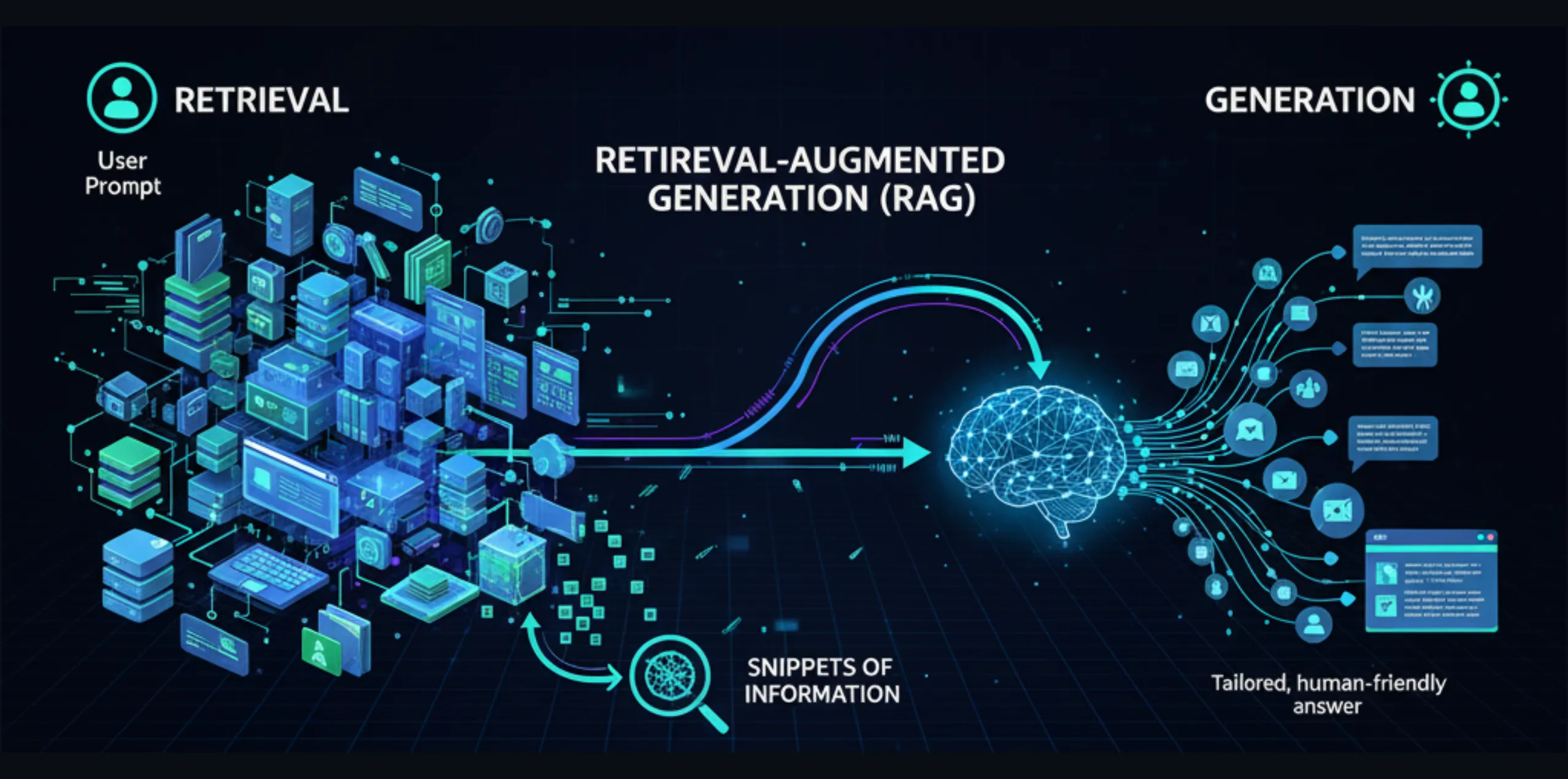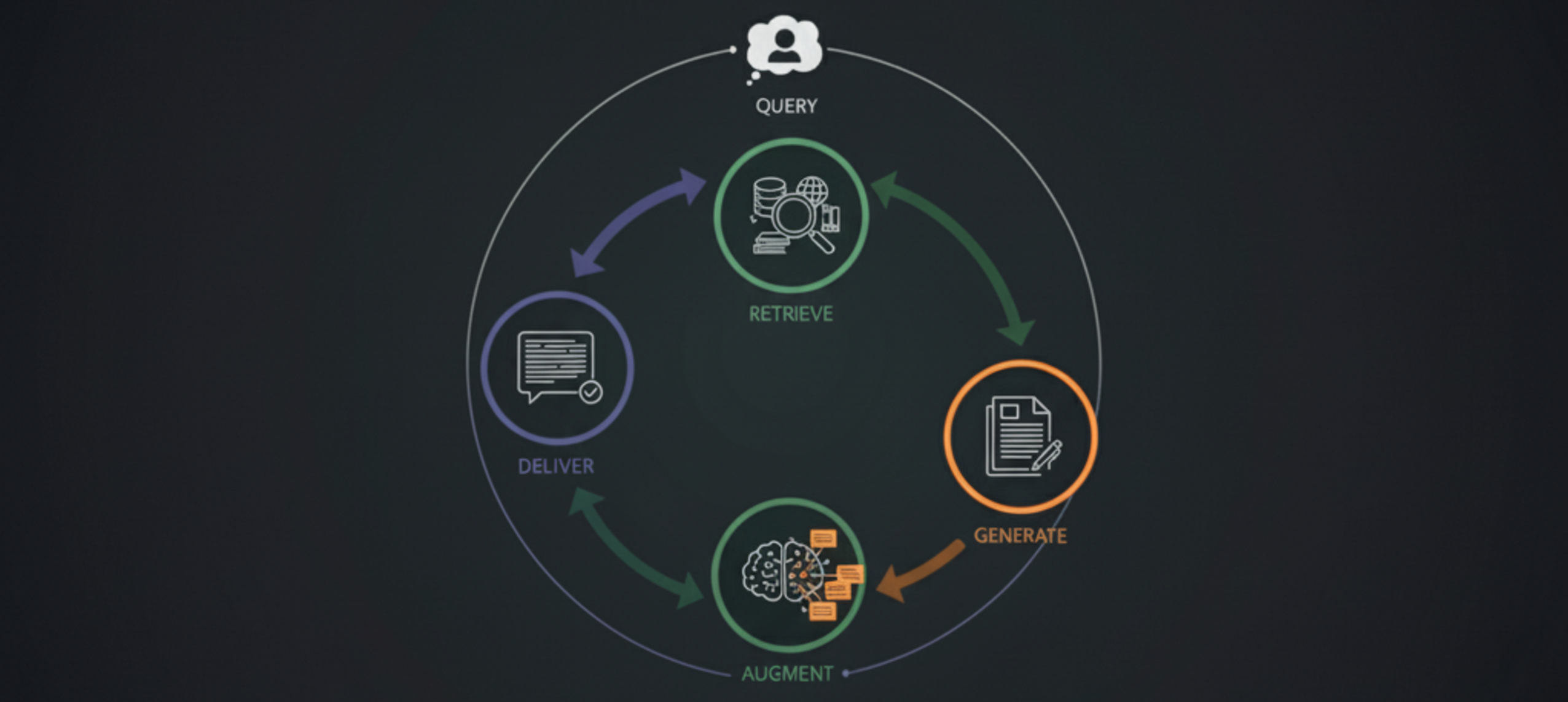What Is RAG AI? The Ultimate Guide to Retrieval-Augmented Generation in 2025
Ever typed a burning question into your favorite chatbot and wondered how it always seems to dig up the perfect answer—even if it’s about last week’s news or a hyper-niche industry rule? Odds are, you’ve brushed against the magic of RAG AI, even if you didn’t know its name. In boardrooms, classrooms, and help desks around the world, Retrieval-Augmented Generation is quietly changing how we get answers from machines.
Whether you’re a business leader trying to stay ahead, a curious student, or a developer hunting for the next leap in AI, understanding RAG AI is vital in today’s fast-moving tech landscape.
Introduction to RAG AI
Picture trying to answer an obscure trivia question. If you ask a human, they might Google it or check Wikipedia before giving you a well-reasoned reply. RAG AI follows a similar playbook—it’s an AI system built to retrieve up-to-date facts from huge knowledge stores and then stitch them into a clear, conversational answer just for you.
What’s fueling renewed excitement in RAG systems for 2025? Demand for reliable, fresh, and explainable AI outputs has never been higher. Businesses want digital assistants that don’t make things up. Students crave smart tutoring that doesn’t go stale. RAG AI rises to these challenges by marrying information retrieval with language generation. Let’s see how it all works, and why it really matters.

What Does RAG Stand For?
RAG isn’t just tech jargon—it stands for Retrieval-Augmented Generation. This sums up its core idea: take a world-class language model, plug it into a mega-library of real-world knowledge, and let the two work in tandem.
Breaking it down:
1. Retrieval: Like a lightning-fast librarian, the AI scans massive databases—think websites, intranets, research archives—to pull out the snippets most relevant to your question.
2. Generation: The AI then draws on its language muscle to weave those facts into smooth, understandable, sometimes even witty prose.
Core Pieces:
- Retriever: Finds the right bits of info for every prompt.
- Generator: Translates those pieces into a tailored, human-friendly answer.
Thanks to this partnership, RAG AI delivers better-informed and fresher results than any language model working in isolation.

How Does Retrieval-Augmented Generation Work?
Let’s walk through what happens the moment you fire off a question to a RAG-powered assistant:
Step 1: User Query
You type or say your question—anything from “Explain quantum encryption in plain English” to “Summarize our company’s latest HR policy.”
Step 2: Retrieval Phase
Instead of guessing from memory, the AI’s retriever dives into external knowledge sources—Wikipedia, legal case files, academic papers, even your company’s knowledge base. It uses advanced search methods (such as semantic embeddings) to pinpoint the material most relevant to your prompt.
Step 3: Augmentation
The generator receives the retrieved content. Here’s the clever bit: your language model isn’t just working from its internal memory—it’s “augmented” by timely, accurate facts plucked from the real world.
Step 4: Response Generation
The generator blends its writing skills with the fetched info, serving up a coherent, context-rich reply. It can explain, summarize, or even link to sources—depending on the setup.
Step 5: Delivery
You get a response that’s both up-to-date and understandable, grounded in sources you can check for yourself.

How is this different from standard generative AI?
Standard models (like GPT-4 or ChatGPT) reply based mainly on what they learned during training—which eventually becomes outdated. RAG AI, by contrast, hooks into live or recently updated sources, so it always has the freshest info at its fingertips.
Key Benefits of RAG AI
So, why is RAG popping up in so many sectors? Here’s what sets it apart:
- Improved Accuracy and Factuality : Traditional AIs sometimes hallucinate, inventing facts that sound plausible but aren’t real. RAG systems are anchored to verifiable sources, so they’re much less likely to trip up.
- Mastery Over Massive Knowledge Bases : Information in healthcare, law, or tech doubles every few years. RAG AI can handle knowledge bases so massive and dynamic, no single human—or static model—could keep up.
- Real-World Adaptability : Whether it’s learning your internal policies or the latest industry regulations, RAG AI adapts swiftly. The moment your company updates its documentation, your digital assistant knows.
- Transparency Users Can Trust : Many RAG systems offer source citations, letting you—or your compliance officer—trace every answer. No more “just trust us” with critical information.
- Cost-Effective Updates : With RAG, you update the knowledge base, not the full AI model. This avoids lengthy retraining, lowers costs, and slashes the time from new discovery to customer answer.
Top Use-Cases of RAG AI
Curious about where RAG really shines? Here’s a snapshot of its biggest success stories:

- Enterprise Knowledge Assistants : Companies drown in documents—policy manuals, meeting notes, product specs—and employees waste hours searching for the latest wording or guidance. With a RAG-powered assistant in the mix, answers bubble up in seconds, saving time and improving accuracy.
- Legal, Medical, and Research Applications : Legal pros use RAG AI to surface specific clauses or precedents from libraries of statutes and opinions. Doctors and researchers trust it to scan cutting-edge studies and boil down findings, supporting evidence-based decisions and staying ahead in fast-changing fields.
- Chatbots & Customer Support : Customers want answers fast—and tailored to their situation. RAG enables chatbots to surface exact solutions from up-to-date FAQs, technical manuals, or ticket histories, leading to happier clients and leaner support costs.
- Search Engines—Reinvented : RAG AI powers advanced search interfaces where questions receive synthesized, well-cited answers, not just a dump of links. Imagine search that feels more like a conversation than a scavenger hunt.
- Personalized Education & Tutoring : Learning platforms now use RAG to pull the right info from course notes, recent lectures, or even community Q&A sessions, delivering teaching that adapts to exactly what the student needs.
RAG AI vs. Traditional Generative AI: A Head-to-Head Comparison
So, what makes RAG more than just another buzzy acronym?
Traditional AIs, like you might find in a basic chatbot, generate responses based only on what they “know” from training. This is fine for chit-chat or creative fiction, but not for live business queries or industry research. RAG’s ace up its sleeve? Fresh, real-world information.
- Traditional Generative AI: Learns everything before deployment, and sticks with it—even as the world changes.
- RAG AI: Consults live or regularly updated external sources, grounding every response in the latest available info.
The result: RAG is ideal whenever the cost of getting things wrong is high, or when knowledge changes quickly.
Yes AI
Tel. : 096-879-5445
LINE : @yeswebdesign
E-mail : info@yeswebdesignstudio.com
Address : 17th Floor, Wittayakit Building, Phayathai Rd, Wang Mai, Pathum Wan, Bangkok 10330
(BTS SIAM STATION)
